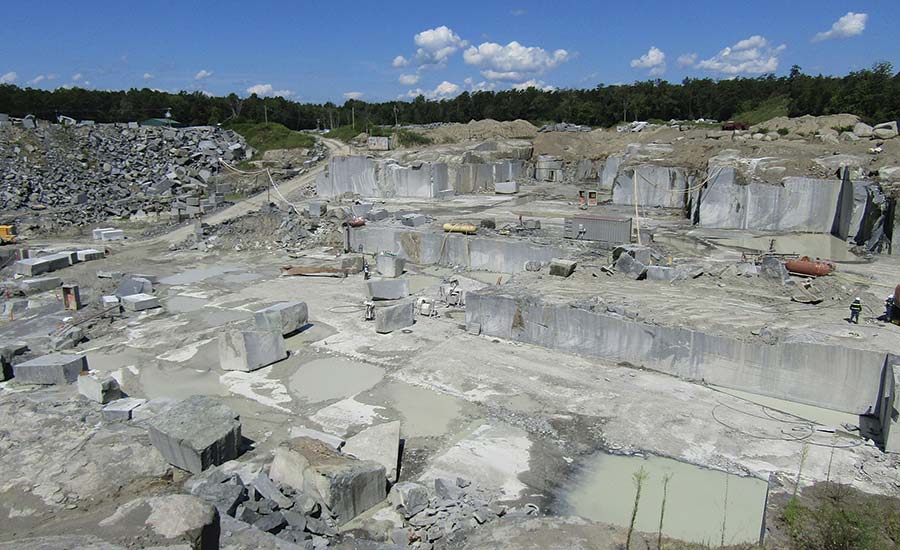Journeying Via Granite Quarries in South Africa: A Visual Odyssey
Journeying Via Granite Quarries in South Africa: A Visual Odyssey
Blog Article
Revealing the Mysteries of Granite Quarrying: Where Strength and Beauty Meet
The world of granite quarrying is a realm where the raw toughness of nature converges with human creativity to develop structures that stand the examination of time with an air of beauty. From the midsts of quarries to the careful polishing in workshops, the procedure of changing granite into building marvels is a complex dancing of practice and advancement. As we peer into the depths of this ancient craft, we start to uncover the covert ins and outs that form the very significance of our built atmosphere.
The Origins of Granite Quarrying
In the record of architectural background, the origins of granite quarrying are shrouded in a tapestry of ancient workmanship and geological marvels. Dating back to old Egypt and Mesopotamia, the removal of granite from quarries marked the start of a journey that would ultimately cause the development of a few of the globe's most renowned frameworks.
Granite quarrying's roots can be traced to the experienced craftsmens that identified the stone's durability and aesthetic appeal. Through a mix of primitive tools and large resolution, these very early quarry employees discovered granite blocks that would certainly become the building blocks of human beings.
As worlds developed, so did the methods of quarrying granite. The Romans, renowned for their design prowess, developed advanced approaches for extracting granite to construct monuments, holy places, and roads that stood the examination of time.
The legacy of these old quarrying practices remains to form modern style, with granite staying a sign of stamina and sophistication in building projects around the globe. (granite quarries in south africa)
Devices of the Quarrying Profession
The advancement of granite quarrying techniques from ancient civilizations to modern-day times highlights the vital duty played by the devices of the quarrying profession in shaping the market's methods. In old times, quarrying tools were rudimentary, commonly being composed of knives, hammers, and wedges made from materials like bronze or iron. These tools needed significant manpower and time to remove granite obstructs from quarries.

In addition, the intro of pneumatic tools and high-powered machinery has actually significantly decreased the physical labor needed in quarrying operations, improving worker security and efficiency. As the quarrying sector remains to innovate, the tools of the trade remain at the center of driving progression and forming the future of granite removal.
Removing Blocks of Granite
Making use of accuracy machinery and advanced techniques, the extraction of granite obstructs from quarries has actually ended up being a sophisticated process in the contemporary quarrying industry. Managed blasting strategies are after that used to break apart the view granite right into workable sections.

Sprucing Up and Ending Up Strategies
To attain a perfect surface on granite blocks, skilled artisans utilize a series of precise polishing and completing techniques. After the preliminary removal and forming procedures, the granite blocks go through a thorough polishing phase to enhance their natural charm and toughness.
Along with polishing, finishing techniques are put on more improve the granite's look. These methods may consist of flaming, refining, or brushing, each offering special appearances and finishes to suit various aesthetic choices. Flaming, for example, involves revealing the granite surface to heats to develop a rough, textured check over here surface, ideal for exterior applications where slip-resistance is necessary. Developing, on the various other hand, supplies a matte surface that is smooth to the touch, perfect for indoor countertops and floor covering. By meticulously choosing and using these polishing and completing techniques, craftsmens can transform raw granite obstructs into exquisite pieces that display both strength and sophistication.

Environmental Impact and Sustainability
With the expanding emphasis on environmental awareness in the industry, granite quarrying methods are increasingly inspected for their impact on natural deposits and long-term sustainability. Quarrying for granite can have considerable ecological implications. The extraction procedure frequently includes using hefty equipment, explosives, and large amounts of water, causing environment devastation, dirt disintegration, and water contamination. In addition, the transportation of granite from quarries to processing facilities produces carbon discharges, better contributing to environmental deterioration. granite quarries in south africa.
To reduce these effects and ensure sustainability in granite quarrying, industry stakeholders are taking on numerous actions. Applying advanced innovations to decrease energy intake and water use, recovering quarried land for ecological reconstruction, and promoting responsible sourcing techniques are some approaches being used. Additionally, qualifications such as the Forest Stewardship Council (FSC) and the Management in Power and Environmental Design (LEED) assistance customers identify eco-friendly granite items.
Final Thought
Finally, granite quarrying is a procedure that needs specialized tools and techniques to remove blocks of granite and brighten them to a high level of finish. While the environmental influence of quarrying can be substantial, initiatives are being made to enhance sustainability these details practices in the sector. Generally, granite quarrying is a delicate equilibrium in between utilizing the toughness and elegance of this all-natural stone while reducing its influence on the atmosphere.
Report this page